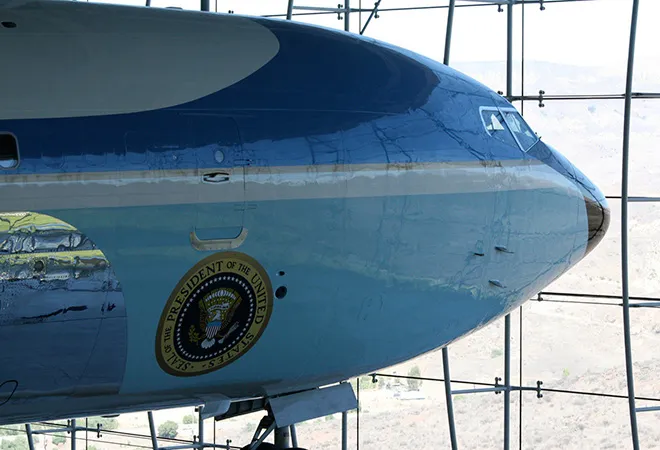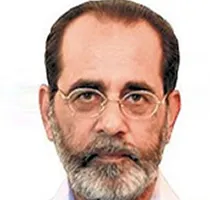
On 21 May, US President Donald Trump announced that US was serving notice of its intent to withdraw from the Open Skies Treaty (OST). Concluded in 1992, the OST entered into force in 2002 and currently has 35 members (Kyrgyzstan is a signatory but hasn’t yet ratified). Canada and Hungary are the depositary states. The reason provided is continuing Russian non-compliance with the OST which has led US to conclude that it is no longer in US interest to remain a party. Trump added that the US decision will take effect after six months (as provided in the treaty text) but US can reconsider if Russia returns to full compliance.
Unravelling arms control
The US decision had been anticipated and is in keeping with recent US decisions to withdraw from the Iran nuclear deal (Joint Comprehensive Plan of Action — JCPOA, signed between US, UK, France, Russia, China, Germany and EU and Iran) on 8 May 2018, followed by the withdrawal from the US-Russia Intermediate Range Nuclear Forces Treaty (INF Treaty) on 2 August 2019.
Two more nuclear related treaties are at risk. The New START treaty between Russia and the US imposes a ceiling on operational strategic nuclear weapons of 700 launchers and 1550 warheads each, was concluded in 2010 and is due to lapse in February 2021 unless extended for a period of five years. President Trump has indicated that he is not in favour of the extension.
US has signed but not ratified the CTBT and there are indications that it may be planning to test.
The second is the Comprehensive Test Ban Treaty which was concluded in 1996 but has not entered into force. It prohibits countries from carrying out nuclear test explosions but earlier this year US voiced suspicions that both Russia and China were carrying out low yield nuclear tests in violation of the understanding on zero-yield threshold. US has signed but not ratified the CTBT and there are indications that it may be planning to test.
Negotiating the OST
The concept underlying the OST is aerial reconnaissance flights by unarmed aircraft over each other’s territories as a means of promoting confidence, trust and stability between potential adversaries. It was first proposed by US President Dwight Eisenhower in mid-1955 in Geneva to Soviet Premier Nikolai Bulganin but found no traction. After the fall of the Berlin Wall, the idea was revived in December 1989 by US President George Bush and accepted by Soviet President Mikhail Gorbachev. Negotiations commenced between NATO and Warsaw Pact members supported by the Organisation for Security and Cooperation in Europe (OSCE, which continues to host the Open Skies Consultative Commission in Vienna) and were concluded on 24 March 1992. It entered into force on 1 January 2002. Warsaw Pact ceased to exist in mid-1991, months before the break-up of the Soviet Union and 27 out of 29 NATO members are party to the OST.
The OST establishes a regime for conduct of short notice flights by unarmed aircraft over territories of States Parties in accordance with established “quotas” spelt out in the treaty taking into account the size of the country. For example, US has a quota of 42 flights, the same as Russia (it is a joint quota with Belarus) while Portugal has a quota of two flights. The quota defines both the number of flights that a country can mount as also the number of flights it can host. The latter is called a “passive quota” and the former, “active quota.” States Parties can form groups to redistribute their active quotas as long as the absolute ceilings are observed. Since 2002, nearly 1500 flights have been undertaken by member states. In recent years, US has mounted an average of 14-16 flights a year while Russia has mounted between 4 and 9 flights annually.
The OST establishes a regime for conduct of short notice flights by unarmed aircraft over territories of States Parties in accordance with established “quotas” spelt out in the treaty taking into account the size of the country.
Time frames are stipulated for providing notice to the observed state with flight plans and possible refueling stops which are needed, particularly across the large territories of US, Canada and Russia. The observed state can propose changes and there are rules regarding deviations. The kind of aircraft to be used by each state are already agreed upon as also the sensors to be mounted on the aircraft. Four kinds of sensors are authorised — optical panoramic and framing cameras, video cameras with real time display, infra-red line-scanning devices and sideways looking synthetic aperture radar. A copy of the data collected is provided to the observed state and other countries can also obtain access to the data. Periodic review conferences have been held where technical issues regarding developments in sensor technology are discussed to redefine approved lists.
Why US is leaving
While Russia and other countries have upgraded both the aircraft and the sensors, US surveillance aircraft modernisation has been held up for lack of funds. Part of the reason is that US is able to obtain equally good or better data from its satellites. No other country can match US’s satellite monitoring capabilities. Sharing of satellite imagery is restricted and accordingly managed bilaterally by US. For the US, the OST is not particularly useful as an intelligence gathering tool, but the reality is that it was always intended as a confidence building and transparency measure. As tensions between US and Russia have grown, US has become more interested in restricting transparency over its territory.
Since 2015, US has voiced concerns about instances of Russian non-compliance in terms of either delaying clearances or imposing onerous restrictions. The recent report on compliance issued by the US State department cited instances of Russian non-compliance in 2019 by imposing a limit of 500 kms over Kaliningrad and creating highly restrictive flight corridors in the Georgian regions of Abkhazia and South Ossetia. US has also cited undue restrictions on flights over eastern Ukraine Crimea. The stage was therefore set for the US withdrawal.
Since 2015, US has voiced concerns about instances of Russian non-compliance in terms of either delaying clearances or imposing onerous restrictions.
The US has been increasingly concerned that Russia is using its overflights over US critical infrastructure to develop actionable intelligence and possibly mapping it for possible future offensive cyber operations. In 2017, an overflight request over the Trump golf estate in Bedford (New Jersey) raised concerns in the White House. This led the US to conclude that Russia was converting the transparency measure into an intimidation measure by weaponizing it. Reacting with a tit for tat approach was not in US interest.
US allies have expressed regret over the US decision. Russia has bluntly rejected US allegations of non-compliance, calling it a pretext for US moves to turn its back on multilaterally negotiated arms control treaties, citing the JCPOA and INF Treaty as examples. However, it has refrained from any indications regarding its response. Clearly, the OST is of limited utility for Russia if US territory is excluded and limited only to Europe and Canada. The OST may limp along for a while even after the US withdrawal takes effect after six months but the countdown for it has begun.
Belarus, Belgium, Bosnia-Herzegovina, Bulgaria, Canada, Croatia, Czech Republic, Denmark, Estonia, Finland, France, Georgia, Germany, Greece, Hungary, Iceland, Italy, Latvia, Lithuania, Kyrgyzstan, Luxembourg, the Netherlands, Norway, Poland, Portugal, Romania, Russia, the Slovak Republic, Slovenia, Spain, Sweden, Turkey, Ukraine, the United Kingdom, and the United States
The views expressed above belong to the author(s). ORF research and analyses now available on Telegram! Click here to access our curated content — blogs, longforms and interviews.




 PREV
PREV


